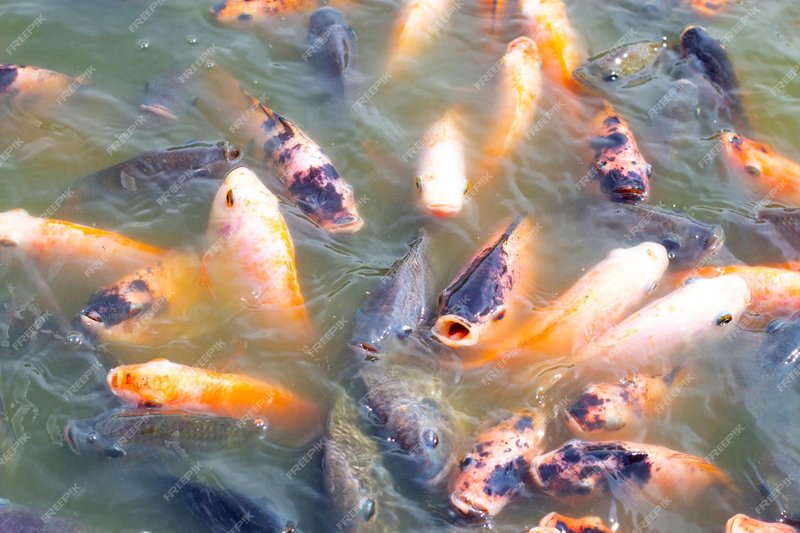
Imagine your pond as a lively community. Each type of fish has its own personality, and just like people, some fish get along while others might clash. Tilapia are known for being relatively easy-going, but that doesn’t mean they’ll fit in with just any crowd. In this article, we’ll unpack the best practices for introducing *tilapia* to your pond and discuss how they can coexist with other species.
Understanding Tilapia’s Nature
Before we can answer whether tilapia can share space with other pond fish, we need to understand what makes them tick. *Tilapia* are hardy fish that thrive in warm waters, often preferring temperatures between 75°F and 85°F. They tend to be quite social, usually swimming in groups—imagine them as the friendly neighbors who always wave when you pass by.
Feeding Habits
Tilapia are primarily herbivores, munching on algae and aquatic plants. This vegetarian diet might make them seem less aggressive compared to carnivorous fish, but it doesn’t mean they can’t be a little territorial, especially if food is involved. If you’re considering adding tilapia to an existing pond, think about what other fish are already there.
Breeding Behavior
Another aspect to consider is their breeding behavior. Tilapia can reproduce quickly, which might lead to overcrowding in your pond. Their fry (baby fish) are delicate, and if they’re not managed properly, they could disrupt the balance in your pond. So, if you’re contemplating mixing tilapia with other species, keep this in mind.
Compatible Pond Fish for Tilapia
Now that we’ve got a grip on what makes tilapia tick, let’s look at whose company they can tolerate. Some species can coexist well with tilapia, while others could lead to a fishy feud.
- Catfish: These bottom-dwellers can be great companions for tilapia. They usually stick to their own space and won’t compete for the same food source.
- Goldfish: Depending on the size of your pond, goldfish can also be a good match. They are typically peaceful and won’t bother tilapia much.
- Bluegill: These medium-sized fish often share habitats with tilapia in the wild. They tend to be non-aggressive and can thrive in similar conditions.
Of course, every pond is different! The size of your pond and the existing fish population play crucial roles in compatibility. Make sure to consider the overall size and health of your aquatic ecosystem.
Fish to Avoid with Tilapia
While some fish can live peacefully with tilapia, others might throw a wrench in the works. Here are a few species to think twice about:
- Predatory Fish: Fish like bass or pike may see tilapia as an easy meal, especially the smaller ones. This can lead to a lot of stress and potential loss for your tilapia.
- Aggressive Species: Fish known for their territorial behavior, like cichlids, might not get along with tilapia either. If they feel threatened, expect nipping and chasing!
Keeping these fish away from tilapia is essential for maintaining peace in your pond. It’s like making sure the right guests come to your dinner party—you want everyone to have a good time!
Pond Size and Environment
The environment you create for your pond fish is just as important as who’s swimming in it. A spacious pond can make a world of difference. Tilapia need room to swim, forage, and breed—much like people need space to move around and breathe.
If your pond is smaller, cramming too many fish species, including tilapia, can easily lead to overcrowding. This not only causes stress among the fish but can also lead to water quality issues.
Water Quality
Keep an eye on your water parameters. *Tilapia* thrive in clean, well-oxygenated water. Regular testing for ammonia, nitrite, nitrate, and pH is crucial. Remember, fish can’t tell you when something’s wrong, so being proactive in water management is key.
Shelter and Shade
Providing plenty of plants and hiding spots can help reduce stress for all your fish. Tilapia love to forage among plants, and having lots of cover can help them feel safe from any potential threats.
Feeding Strategies for Mixed Fish Ponds
Feeding time can become a lively event in your pond, much like a family dinner. It’s essential to develop feeding strategies that cater to the different dietary needs of your fish.
For tilapia, you might consider using high-quality pellet food designed for herbivores. This helps replicate their natural diet. Adding fresh vegetables like peas, lettuce, or spinach can mimic their foraging habits and keep them happy.
On the other hand, if you have carnivorous or omnivorous species, make sure to provide their preferred food without overfeeding, which can pollute the water. A good rule of thumb is to observe how quickly the fish eat their food.
Monitoring Behavior and Health
After introducing tilapia to your pond, keep a close eye on their behavior. Are they swimming happily, or do they seem stressed? *Tilapia* typically thrive in groups, so if they appear isolated or are hiding a lot, it’s worth investigating.
Also, watch for signs of illness. Common issues can arise, like fungal infections or parasites, especially in a mixed-species environment. If you see any unusual behavior or physical signs like spots or lesions, it may be time to consult an expert.
Final Thoughts on Keeping Tilapia with Other Pond Fish
Bringing tilapia into your pond can be a rewarding experience. They can contribute to a vibrant ecosystem, but as with any community, it’s all about compatibility. By understanding their needs and behaviors, you can make informed decisions on which other fish might share their home peacefully.
Creating a balanced pond environment can sometimes take a little trial and error. Remember to monitor your fish regularly, manage feeding habits, and ensure your water quality remains top-notch. With the right approach, you’ll find that tilapia can fit in beautifully with other pond fish, creating a lively and harmonious aquatic neighborhood!

